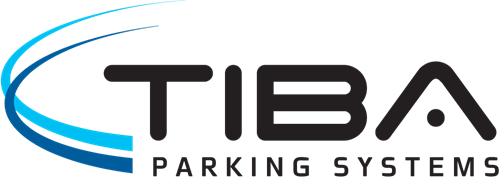
The modern airport is much more than a gateway for air travel; it is a bustling hub of activity where various modes of transportation converge. As passenger expectations evolve, the demand for seamless, efficient, and environmentally friendly transit options grows. Integrating airport parking with multi-modal transportation hubs is a forward-thinking approach that addresses these demands, offering significant benefits for both travelers and airport operations.
The Strategic Importance of Multi-Modal Integration
Integrating airport parking facilities with other forms of transportation—such as public transit, ride-sharing services, and shuttle systems—creates a cohesive transportation ecosystem. This integration allows travelers to move seamlessly between different modes of transport, reducing the stress and complexity of travel. For airport authorities and parking managers, this integration is not just about convenience; it's a strategic necessity to stay competitive in an increasingly interconnected world.
Key Benefits of Integration:
Enhanced Accessibility and Convenience: Integrating parking facilities with various transportation modes provides travelers with more options and greater flexibility. For example, a traveler could park their car and easily switch to a shuttle, train, or bus that takes them directly to the terminal. This kind of seamless transition reduces travel time and enhances the overall experience, making the airport more attractive to a wider range of passengers.
Operational Efficiency: When airport parking is integrated with a broader transportation network, it helps streamline traffic flow, reduce congestion, and improve the efficiency of airport operations. Properly managed, this integration ensures that different types of traffic—such as private cars, taxis, and buses—are directed into designated areas, reducing bottlenecks and enhancing safety.
Environmental Sustainability: Encouraging the use of public transport and ride-sharing services as part of an integrated transportation hub can significantly reduce the number of single-occupancy vehicles on the road, leading to lower emissions and a smaller environmental footprint. This is particularly important as airports and cities strive to meet increasingly stringent environmental regulations and sustainability goals.
Increased Revenue Opportunities: Multi-modal integration can open up new revenue streams for airports. For instance, airports can offer bundled services that include parking and transit passes, premium parking options with direct access to transit, or even partnerships with ride-sharing companies that provide exclusive parking and drop-off areas. These offerings can attract more customers and enhance profitability.
Overcoming Challenges in Integration
While the benefits of integrating airport parking with multi-modal hubs are clear, the process is not without its challenges. Successful integration requires careful planning, substantial investment, and close collaboration between various stakeholders.
Infrastructure Development: Creating a truly integrated multi-modal hub often requires significant infrastructure investment. This might include building or expanding transit stations, enhancing parking facilities, and installing advanced wayfinding systems to guide travelers. Airports need to balance these costs with the long-term benefits of improved efficiency and customer satisfaction.
Stakeholder Coordination: Integration involves multiple stakeholders, including airport authorities, public transit agencies, ride-sharing companies, and local governments. Coordinating the interests and efforts of these diverse groups can be complex but is essential for creating a unified and functional transportation hub.
Technological Integration: Effective integration also relies on advanced technology to manage and coordinate the various transportation modes. This includes real-time data sharing, synchronized scheduling, and integrated payment systems that allow travelers to easily transition between parking, public transit, and other services. Investing in these technologies can enhance operational efficiency and provide a better experience for travelers.
Looking Ahead
As airports continue to expand and evolve, the integration of parking facilities with multi-modal transportation hubs will become increasingly important. For airport and parking professionals, focusing on this integration offers a pathway to meet the demands of modern travelers while also addressing operational challenges and environmental concerns.
By prioritizing connectivity, efficiency, and sustainability, airports can create transportation hubs that not only facilitate smoother travel experiences but also position themselves as leaders in the global transportation network. This integration represents a critical step in the future-proofing of airport infrastructure, ensuring that it remains adaptable to the changing needs of travelers and the environment.
 About Parking Network
About Parking Network
Parking Network is the leading information source for parking. We connect professionals through our online and offline channels. On our online platform parking.net, we publish the latest news, product showcases, job openings, and tenders related to parking. On our platform, you can access the most complete industry and parking professionals directory. Offline, we host niche-specific networking events such as the Airport Parking Network Event.



